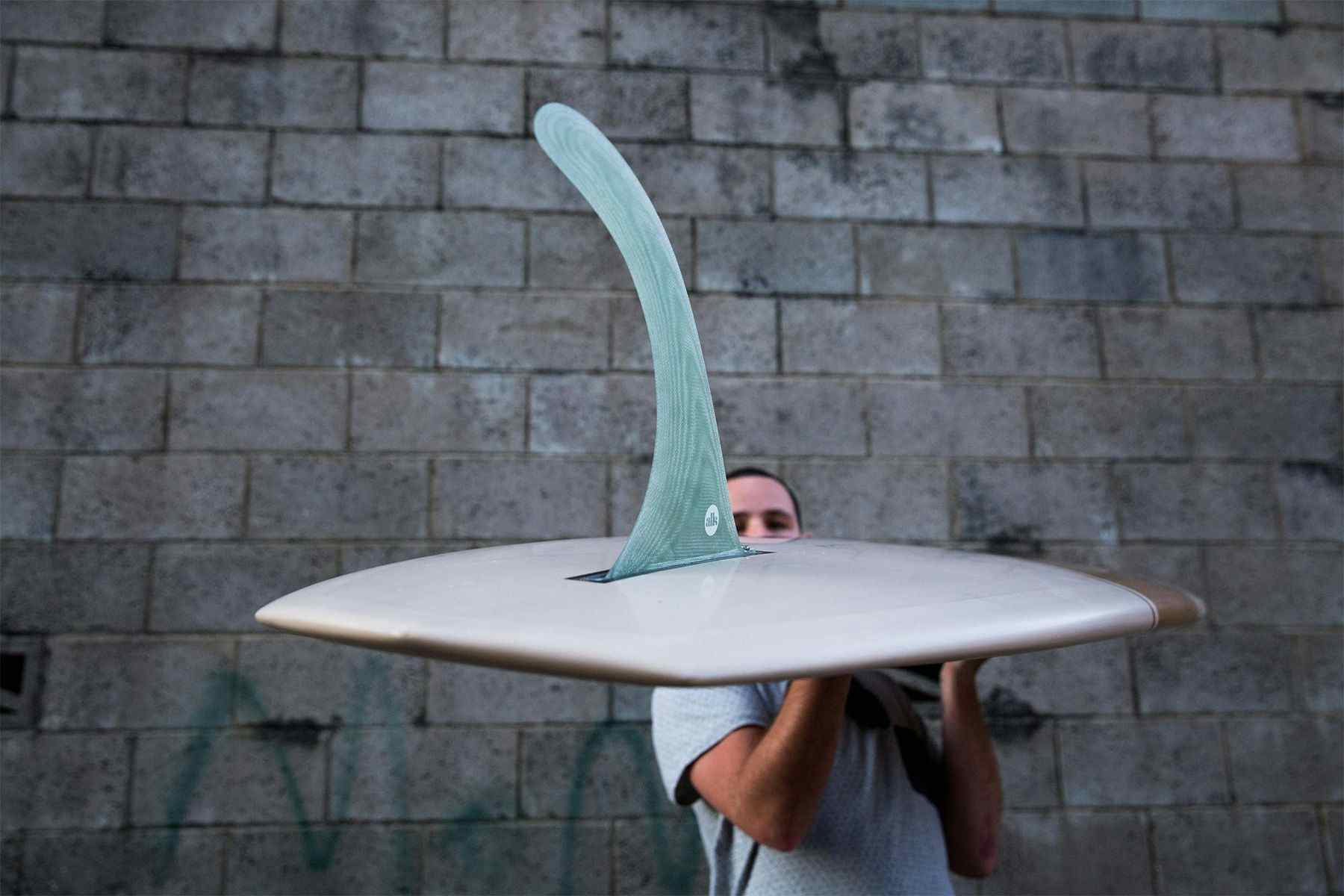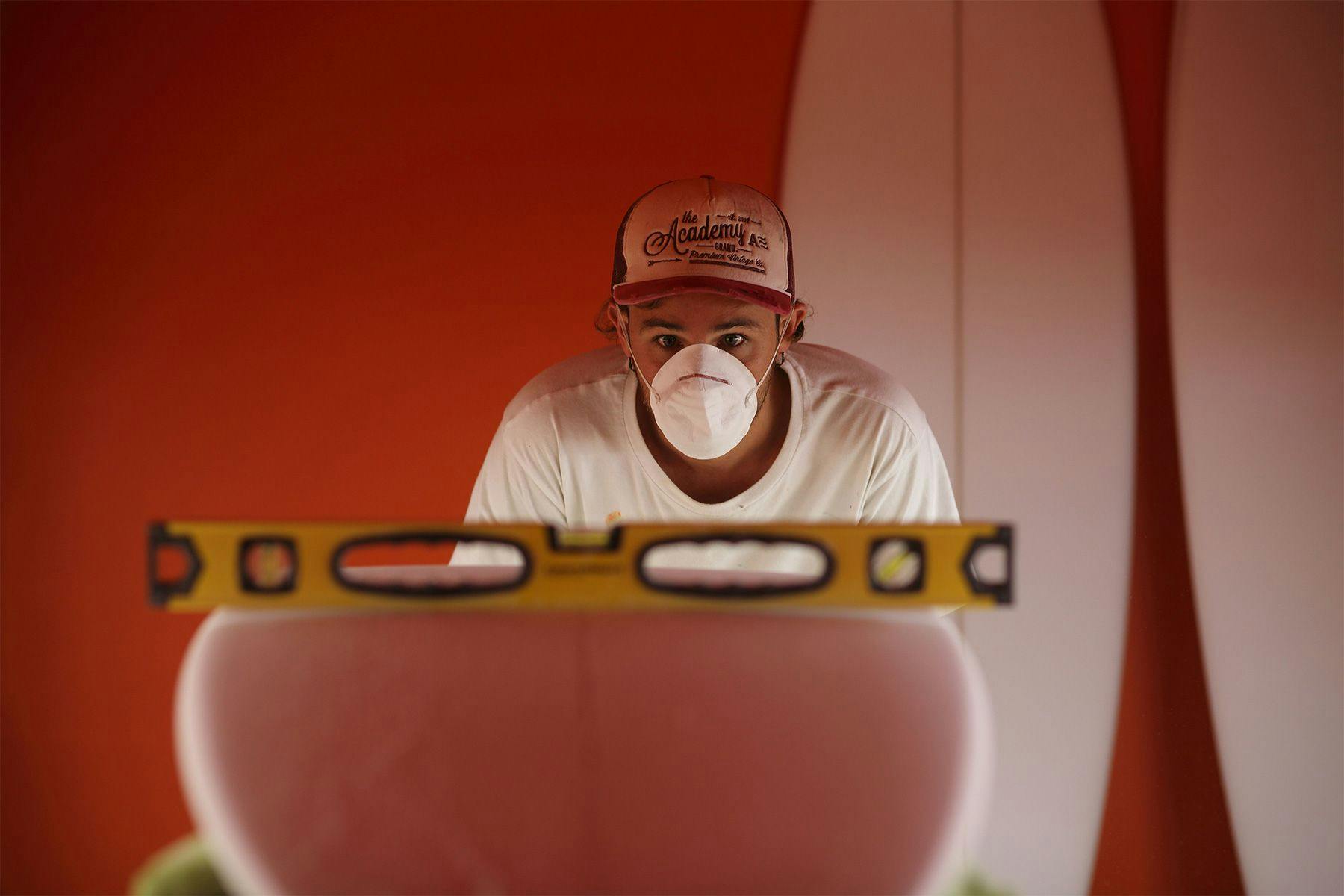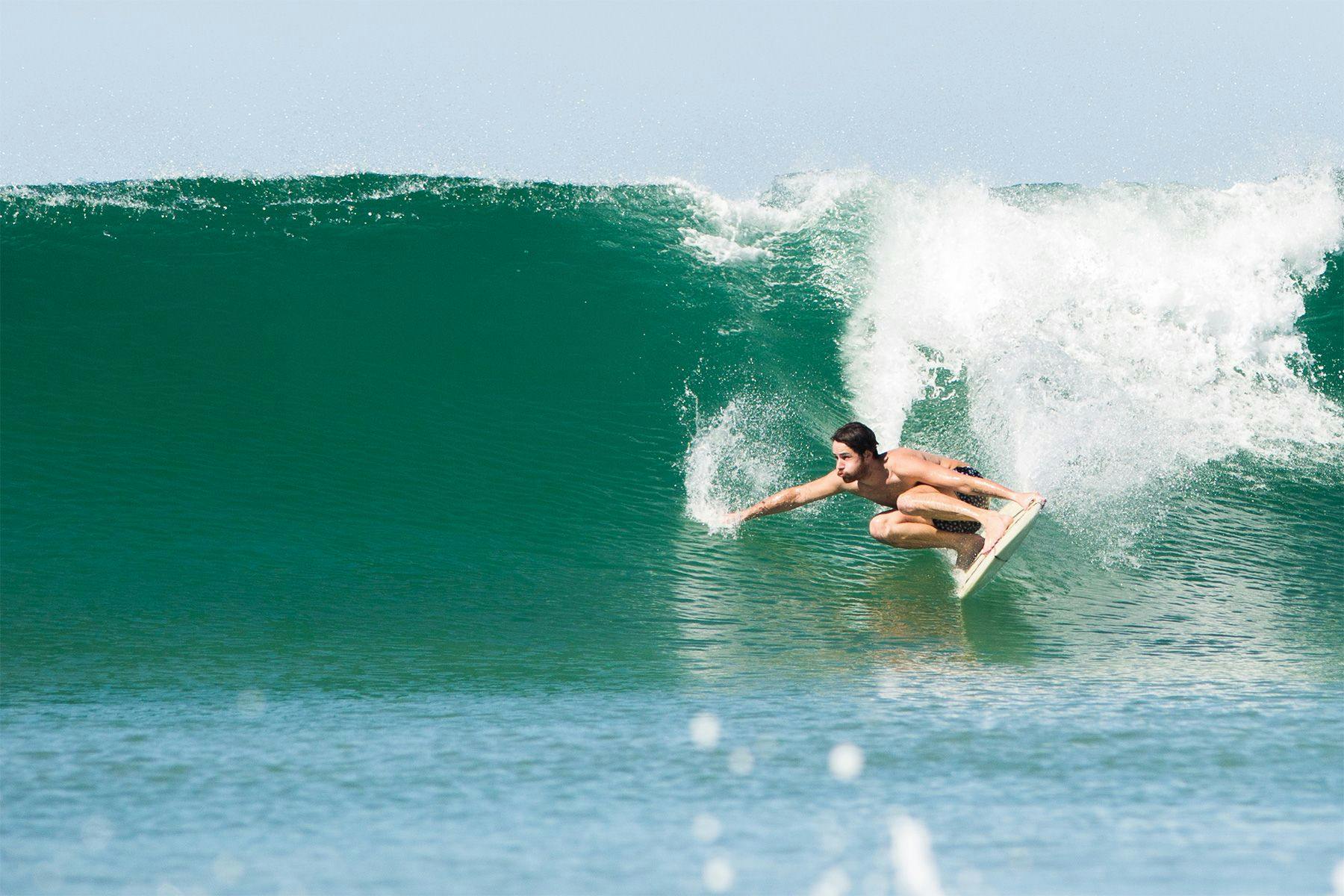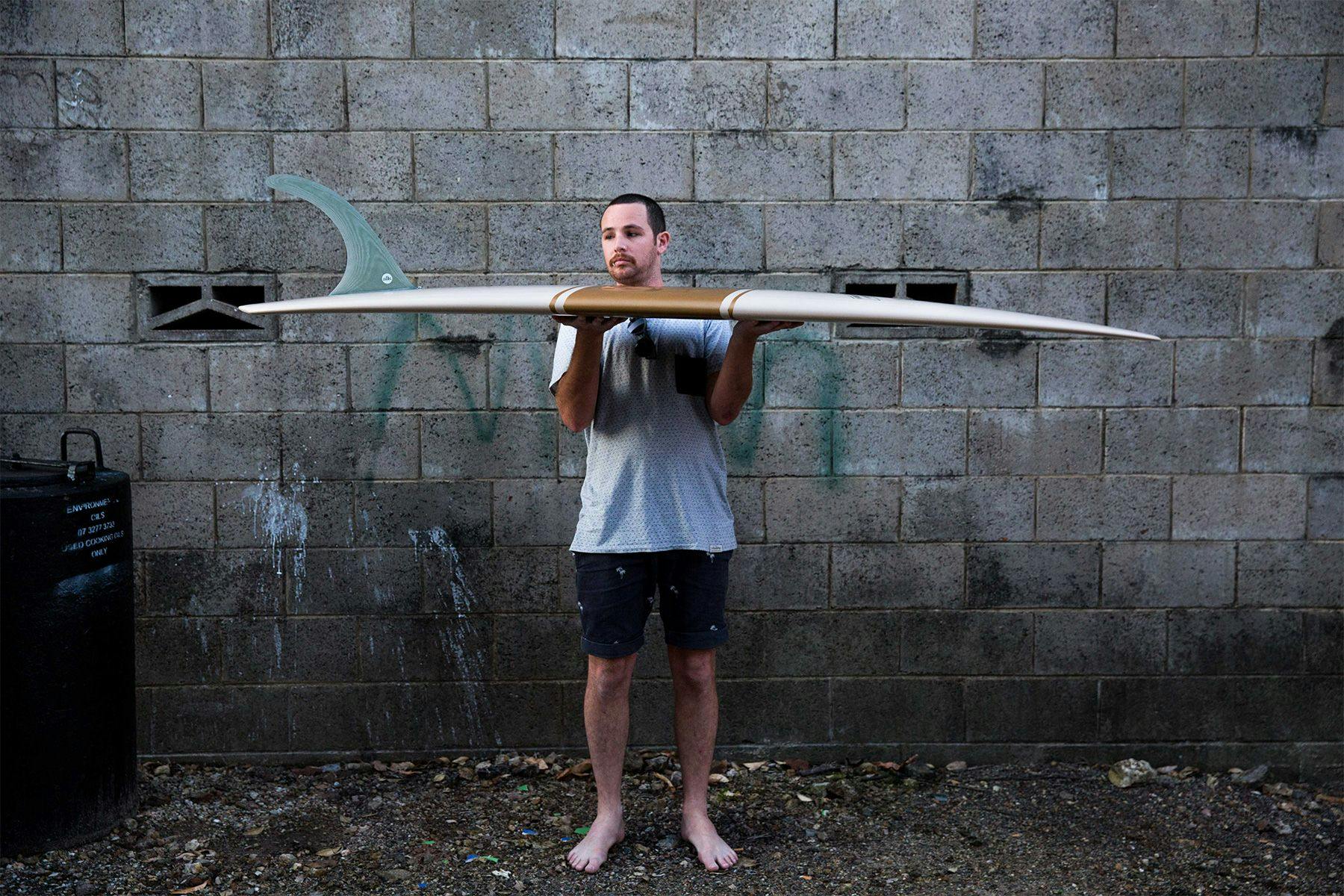SurfboardsChronicles of Vee

The “Chronicles Of Vee” anthropomorphizes our much loved bottom contour and tells us her life story so far.
Born in 1967, “Vee” was the daughter of Australian surfing and innovative engineering. She was by no means your typical type of bottom contour. Her convex shape elicited from two longitudinal panels that bisected in the middle, and ran down the tail section of the bottom surface. This had been absent from the world of surfboard design for over thirty years. Bob1 and Skil2 (see footnote below) always dreamed of a shape that would act as a pivot point for rail-to-rail surfing, and they felt Vee had realised their dreams.

From a young age, Vee’s features were a source of much gossip and discussion, as she defied the regular principles of bottom contour in search of her own way to grasp the wave. Her aunt Flat was all about speed and laughed at Vee for wobbling so much. Her cousin Concave was a bit more respectful towards Vee’s mindset, but struggled to understand the child’s reckless attitude towards wave riding.
“You’re too slow and there’s energy being lost when the water escapes from the rails!” Concave might say.
But for Vee, speed wasn’t everything. She was far more curious about the unexplored aspects of manoeuvrability and wanted to find out just how much she could dig her rails. She had an adventurous planning surface and was quick to react, and would choose a stormy 12 foot day at Sunset Beach over small and mellow surf, anytime. Some called her ‘unstable’, but she preferred to be referred to as a ‘stability-seeker’.
Her dad told her tales of how so many surfers were struggling to carve turns on their high-volume, wide boards, and that this was the main reason why Vee was concieved: to carve a shorter arc on the wall and turn the board more easily. Following the birth of Vee, many surfboards used her bisected panel design to lean over one side or the other, allowing for more precise drive, increased responsiveness and much tighter turns.

Like any adolescent, Vee went through different phases in her life.
In her early years, as she took her first steps, she remained unevolved, yet curious. Through the 1970s she experienced a ‘spiral phase’, during which time her bisection peaked under the fin and her panels were hollowed out towards the rail, in the attempt to create more bite. Over the following years, Vee felt the subtle tickle of water spiralling through the troughs and enjoyed the sensation. More than ever, her adventurous spirit was stimulated by a clear view of how the merging of design principles could benefit wave riding, and she began to notice that she wasn’t so different to her relatives Flat and Concave after all.
As time went by, Vee began to develop her personality and accept her limitations. She understood that in more powerful waves she had a tendency to tip over, or run on one rail and climb out of the water. She also noticed that her features were more popular among the crews of Guns and Longboards, and that Shortboards usually gazed affectionately at her cousin Concave. Her elevated spine was there to initiate turns and provide drive and direction, but did little to create the acceleration that the Shortboard crew looked for.

Vee found the beginning of the ‘90s to be an important period in her life. Around the time that The Berlin Wall was brought down and Nelson Mandela was released from prison, she took her first steps into her new ‘reverse vee’ phase3. The primary restriction of her original design had always been her inability to enhance a surfboard’s speed. She could direct and turn, but she wasn’t very good at accelerating. To address that, the “reverse approach” was introduced, and her pattern began to feature a slight inversion in the nose entry that gradually increased into the middle section of the board (deepest under the front foot), often running into two subtle parallel concaves towards the fins and merging to a flat surface or a single concave at the tail.
Such a combination of elements maintained the essence of Vee, while adopting principles from her cousin Concave (and even uncle Flat), in order to optimize the ride. The reverse vee became popular among front-footed surfers, who were delighted with the outcome of easily driving the board off the front foot, while being able to turn sharply off the back foot. This phase and the popularization of his reinvented features were the proof that Vee needed to understand that the future was at her fingertips.
Having seen many sunrises and glided through countless waves, Vee has witnessed many transitions in surfboard design and has become ever so flexible to the demands of modernity. She often looks back to her first steps as a clean, straightforward, bottom contour design and realises just how much his original concept was naturally driven to merge with others in the search for the ultimate ride.
Much has changed since her first moments cutting the surface or drawing sharp arcs on the walls of water, but she remains true to her essence and never forgets that both in life (and surfing) speed isn’t everything. Sometimes all we need is a quick change of direction to place ourselves in the right spot.
Images of shaper Andrew Warhurst (Fine Surfcraft by Andrew Warhurst) by (and copyright of) photographer Mia Sara.
Footnotes
- Australian surfboard shaper Bob McTavish is credited with inventing the vee-bottom surfboard in 1967. Inspired by their friend, the visiting Californian kneeboarder George Greenough, McTavish and 1966 World Champion Nat Young experimented with shaping thinner, lighter surfboards that would allow them to manoeuvre faster in the pocket. In March 1967 McTavish shaped a nine-foot-long wide-tailed board with pronounced vee running through the rear third of the board, and named it The Plastic Machine. He shaped several similar surfboards, decreasing in length, and these more manoeuvrable boards were part of the start of the shortboard revolution.
- The Skil 100 is considered “the” planer by surfboard shapers around the world, with many shapers still using the original machines they bought back in the 60’s and 70’s, although now much repaired.
- In 1990 Maurice Cole began shaping surfboards for Tom Curren and Curren won his third World Title that year. In 1991 a shipment of pre-shapes arrived with Cole with more rocker curve than intended due to them being packed and shipped incorrectly. In attempting to correct this Cole (accidentally) shaped vee under the front foot and removed the vee from between the fins – reversing the standard vee bottom configuration. The result was a much faster board that would carve at higher speeds, and Maurice Cole’s reverse vee (or EEV) and Curren went on to a win in Hawaii that winter on one of these boards.